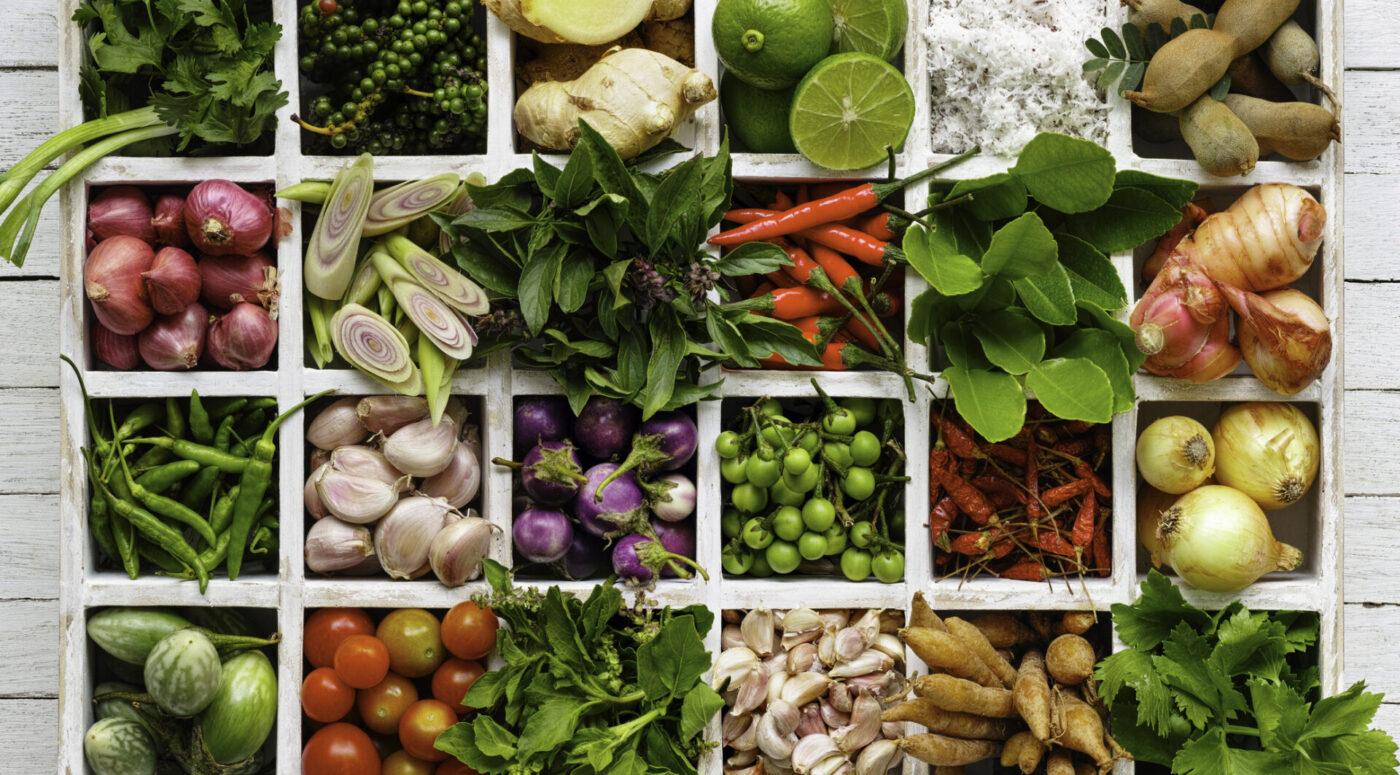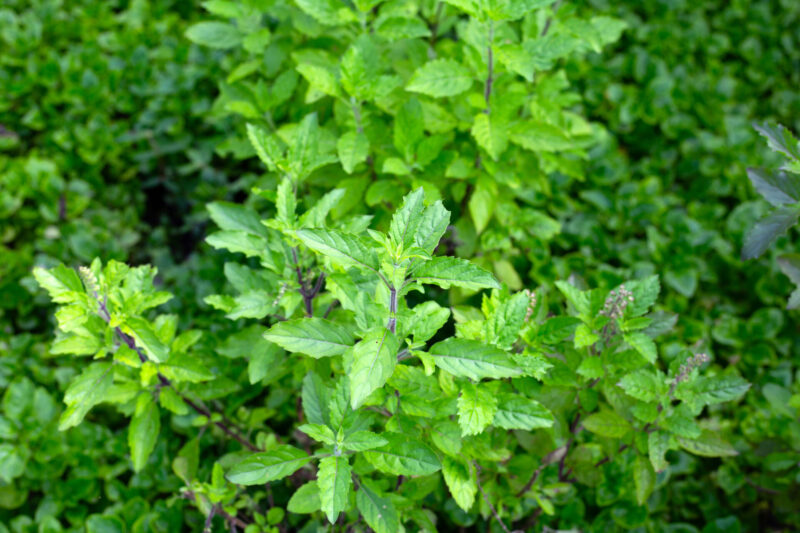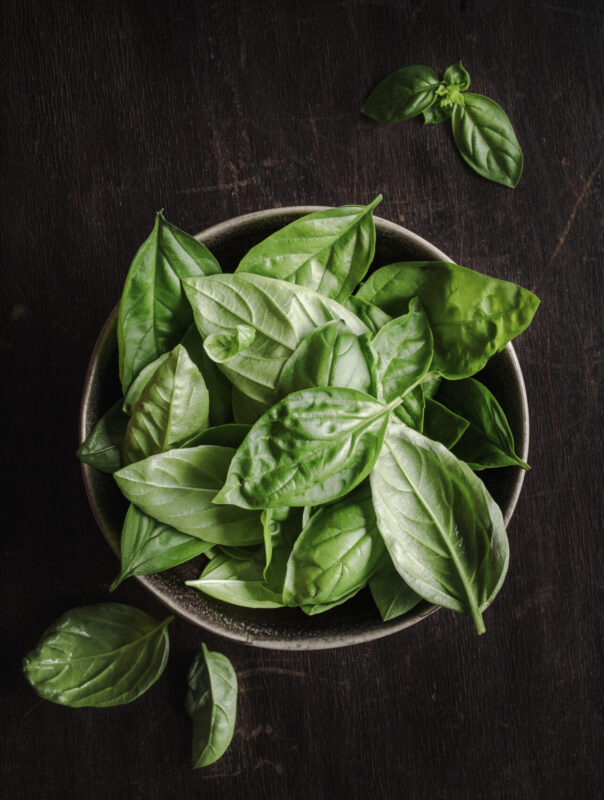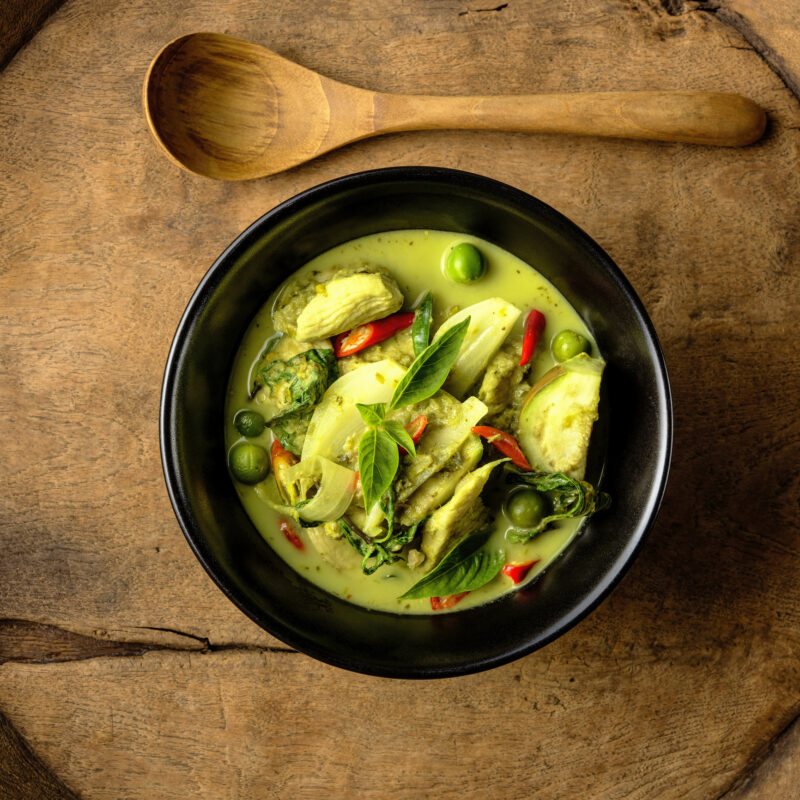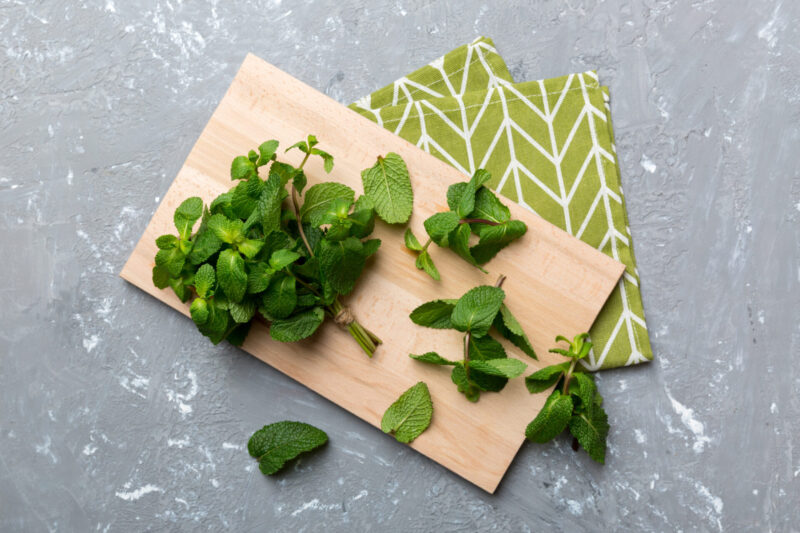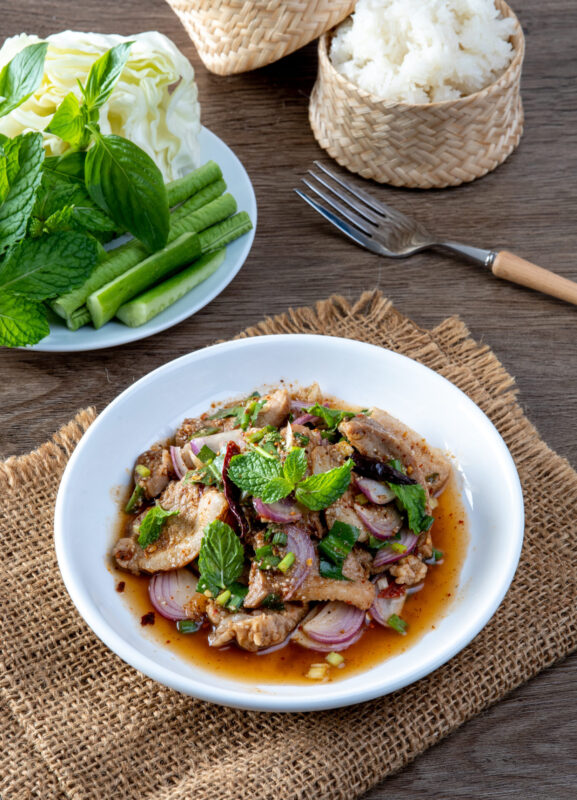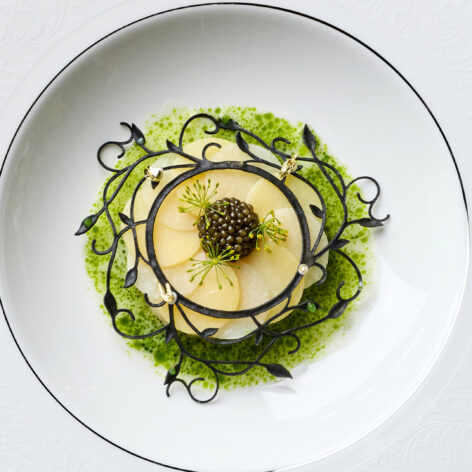The charm of Thai cuisine lies not only in its bold flavors but also in the intricate balance of aromas that define each dish. Among the key elements that contribute to this harmony are the herbs, which lend depth, complexity, and vitality to the food. While Thai dishes are renowned for their unique fusion of sour, sweet, salty, and spicy tastes, it is the careful use of “aromatic herbs” that elevates them to culinary masterpieces. Some herbs thrive in heat, while others are best enjoyed fresh or paired with chili paste to bring out their full potential.
In this feature, we delve into the fragrant world of 3 quintessential Thai herbs: holy basil, sweet basil, and mint. While they may appear similar at first glance, each possesses distinctive flavors, aromas, and health benefits that make them indispensable in Thai kitchens.
Holy Basil
Regarded as the “queen of herbs” in Thai households, holy basil is often grown in home gardens, where its robust leaves offer both culinary and medicinal benefits. Known for its ability to aid digestion, reduce bloating, and relieve colds, holy basil is a powerful herb with a slightly peppery flavor that can add a distinctive punch to any dish. Its versatility shines in a wide range of recipes, from the ever-popular Pad Ka Prao (stir-fried meat or seafood with Thai basil) to spicy soups, and fried chicken with basil sauce. Frying the basil leaves enhances their aroma and imparts a delightful crisp texture that further enriches the meal.


